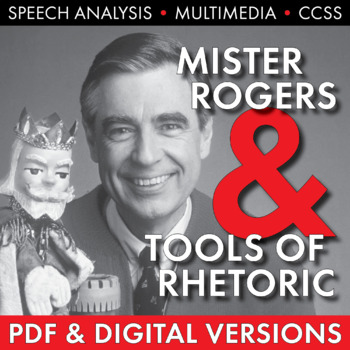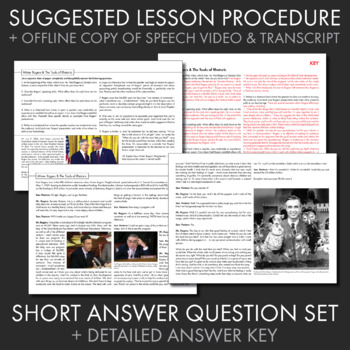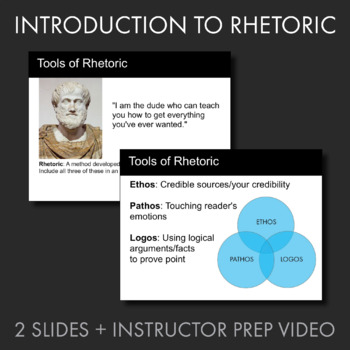Mister Rogers Real World Rhetoric Analysis Mr. Rogers Senate Speech PDF + Google
- Zip
- Google Apps™

What educators are saying
Description
Show your students a real-world application of the tools of rhetoric (ethos, pathos, and logos) as they examine the 1969 U. S. Senate subcommittee address given by Fred Rogers, host of Mister Rogers’ Neighborhood, in support of public broadcast funding. The speech, filled with Mister Rogers’ warmth and kindness as he secures $20 million in funding for public television, is a high-interest way to add the non-fiction analysis skills emphasized by the Common Core to your classroom.
Students will learn the components of Aristotle’s rhetorical devices, view Rogers’ testimony via a 7-minute video clip, and use a full-text transcript of his comments to answer/discuss depth-of-knowledge questions. The worksheet questions require students to dig deep into the text as they support their answers about Rogers’ message and his skillful use of rhetorical tools. Finally, students will make personal connections to the issues raised by Rogers, which always make for compelling class discussions.
The materials, which could take up to two 45-minute class periods to work through, include:
• Suggested lesson procedure with helpful tips
• Two slides (in PowerPoint, Google Slides, and SMARTBoard’s Notebook software format) to use as a mini-lesson to introduce Aristotle’s tools of rhetoric – ethos, pathos, logos
• A 5-minute video of lecturer notes to use as prep for the slide presentation (link included)
• A two-page transcript of the speech (public domain; full transcript included)
• A 7-minute video of Mister Rogers’ testimony to the U.S. Senate Subcommittee on Communications (public domain; full video included)
• A short answer set of questions that will help students identify and analyze the elements of Rogers’ presentation
• An answer key to make for easy grading and to help guide class discussion
This material (a total of two slides, six pages of PDF content + Google Drive version of the student handouts, and 7-minute mp4 file) is appropriate for 7th through 12th grade students.
Want more activities like this one? Click here to scroll through my entire collection of video-based lessons: https://www.teacherspayteachers.com/Store/Laura-Randazzo/Category/Video-Based-Lessons-496064
Want students to spend more time getting to know Mister Rogers? Click here to download a student-directed Fred Rogers biography research activity:
Thanks for stopping by!
Cover image credit: FunnyMath via eBay, WikiMedia Commons, public domain





